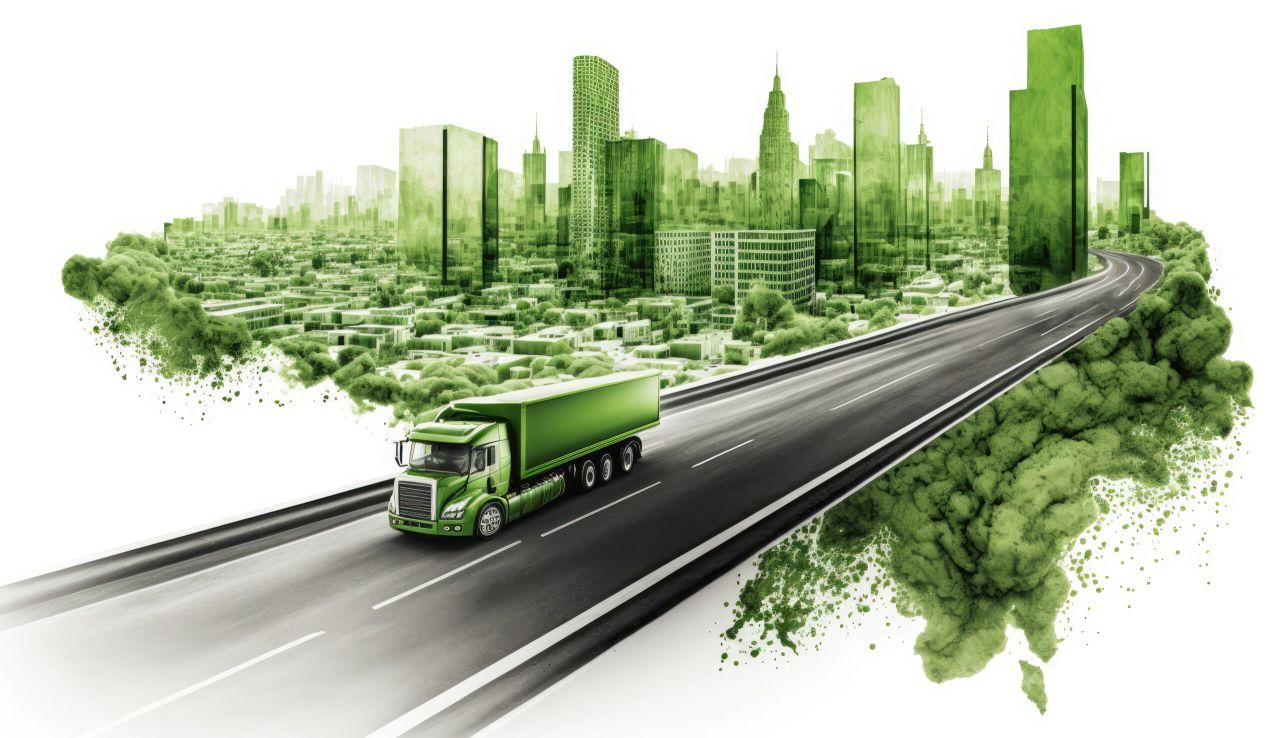Top Sustainable Transportation Methods for a Greener Future
Discover the Future of Eco-Friendly Commuting: EVs, Public Transit, and More
Getting around in the future is all about being smart and kind to our planet. Sustainable transportation means moving from place to place in a way that doesn’t hurt our environment. This includes using electric cars, riding bikes, taking public transport, or even walking.
These methods use less fuel, produce less pollution, and keep our air clean. It is important to choose these greener ways to travel because our world is getting hotter, and our cities are becoming more crowded.
Why is this important? Well, the way we travel today affects the world we live in tomorrow. For example, cars that run on gasoline give off harmful gases that make our Earth warmer. But when we use sustainable ways to commute, like electric buses or trains, we help reduce that pollution.
Also, biking or walking keeps us healthy and strong. As more people choose these eco-friendly options, we help make our cities cleaner, safer, and more fun to live in.
In the future, commuting will be all about balance. We will mix smart technology with green ideas. This change is not just good for the planet; it’s good for all of us. Learning about these sustainable transportation methods now means we can be part of the solution. So, let’s explore the top ways we can make commuting better for ourselves and our world!
Electric Vehicles (EVs): The Driving Force of Change
Electric vehicles, or EVs, are like cars, but they run on batteries instead of gasoline. Today, more people are choosing EVs because they are clean and quiet. We call this the “Rise of EV Adoption.” Many countries are building more charging stations, making it easy to power up an EV just like you would charge a phone. Big car companies are making new and cool models that kids and adults will love!
There are many benefits of electric vehicles for commuters. First, they don’t produce smoke like regular cars. This means they keep the air cleaner and healthier to breathe. Second, they cost less to run. Gas prices go up and down, but electricity is often cheaper. EVs also need less maintenance because they have fewer moving parts. For example, they don’t need oil changes! So, EV owners save money while helping the planet.
But there are also some challenges. Right now, not all cities have enough charging stations, so some people worry about running out of power. The batteries in EVs are expensive, too, which makes the cars cost more to buy. However, smart people are working on new ideas every day. Future trends in EV technology include faster charging times and cheaper batteries. Some EVs might even charge wirelessly!
Electric vehicles are changing how we think about driving. They are the driving force of change in transportation. By making these cars better and more affordable, we can all enjoy a cleaner, greener world. So, keep an eye out for more EVs on the road!
Public Transportation: Reinventing the Way We Travel
Public transportation includes buses, trains, and trams. These are big vehicles that carry many people at once. They help reduce the number of cars on the road, which means less pollution and traffic.
Buses are like big cars that follow set routes. Trains run on tracks and can travel long distances quickly. Trams move on rails and are often found in city centers. All these options make commuting easier and greener.
Public transportation is getting smarter with innovations. For example, some cities now have electric buses. These buses run on batteries, so they don’t produce smoke. There are also autonomous trains. These are trains that drive themselves without needing a driver. They use computers and sensors to stay on track and pick up passengers. These innovations help make public transit more efficient and eco-friendly.
Cities around the world are upgrading their public transit systems. They are adding more electric buses and building new tram lines. Some places are even working on super-fast trains called high-speed rail. These trains can zoom from one city to another in just a few hours. Cities are also improving their transit stations to make them cleaner and more comfortable. They are adding features like real-time updates on when the next bus or train will arrive.
Public transportation is reinventing how we travel. With these exciting changes, commuting will be smoother and better for the environment. So, next time you ride a bus or train, remember that you’re helping make the world a greener place!
See Also: Buying a Used Car in the UK is a Smart Choice for Everyone
Micro-Mobility Solutions: Bicycles, E-Bikes, and Scooters
Micro-mobility means small, personal vehicles that help us get around. These include bicycles, e-bikes, and e-scooters. They are great for short trips around the city and are friendly to our planet. Micro-mobility solutions are popular because they are easy to use and help reduce traffic. Plus, they don’t need much space to park.
Understanding micro-mobility and its benefits is simple. Bicycles are classic and fun. They help us stay fit and are very eco-friendly. E-bikes are like regular bikes but have a battery to help you pedal. This makes it easier to go uphill or ride longer distances. E-scooters are electric and perfect for zipping around town quickly. All these options are great for making our commutes shorter and more enjoyable.
In recent years, there has been a surge in e-bikes and e-scooters for urban commuting. Many people like these because they are fast and save time. Cities are seeing more of these vehicles on the streets every day. They help people avoid traffic jams and find parking more easily. Also, riding an e-scooter or e-bike can be a lot of fun!
To support micro-mobility, cities need certain policies and infrastructure. They must build safe bike lanes and scooter paths to keep riders safe. Cities also need to create places to park these vehicles, so they don’t clutter sidewalks. Proper rules and guidelines help everyone use micro-mobility safely and effectively.
Micro-mobility solutions are changing how we travel in cities. They make commuting easier and greener. So, next time you see a bike, e-bike, or e-scooter, consider how these cool options are helping us move towards a cleaner future!
Carpooling and Ride-Sharing: Maximizing Efficiency
Carpooling and ride-sharing are two smart ways to travel with others. It means sharing a car with friends or neighbors who are going the same way. Ride-sharing is when you use an app to find someone else going where you need to go. Both of these ideas help us save money and reduce road traffic.
Carpooling reduces traffic and emissions in a big way. When fewer cars are on the road, there are fewer traffic jams. This means people spend less time sitting in their cars. Also, fewer cars produce harmful gases when more people share one car. This helps keep the air cleaner for everyone. Carpooling is not only good for the environment but also makes driving more fun because you can chat with your friends along the way!
Ride-sharing apps are becoming very popular. Apps like Uber and Lyft help you find a ride quickly. You can use these apps to get a ride to school, work, or anywhere else you need to go. It’s easy to use and makes getting around simpler. Many people like these apps because they offer a way to travel without owning a car.
Corporate initiatives and incentives for carpooling are helping more people join in. Some companies encourage their employees to carpool by offering rewards. They might give out gift cards or extra time off for those who share rides. This helps reduce the number of cars coming to work, which eases traffic and lowers pollution.
Carpooling and ride-sharing are making our travels easier and better for the planet. By sharing rides, we help cut down on traffic and keep our air clean. So, next time you need to go somewhere, think about how sharing a ride could make your journey better!
Walking and Cycling: The Ultimate Green Commute
Walking and cycling are great ways to travel that are both fun and healthy. They are also very good for the environment. When you walk or ride a bike, you don’t use any gas, and you don’t make pollution. This helps keep the air clean and our planet healthy.
Walking and cycling have many health benefits. When you walk or ride a bike, you exercise your body. This helps keep your heart strong and your muscles fit. It also gives you more energy and can make you feel happy. Plus, you get to see more of your neighborhood up close, which is always exciting!
Cities are planning to be more walkable and bike-friendly. This means they are adding more sidewalks and bike lanes. Sidewalks make it safe for people to walk, and bike lanes are special paths just for bicycles. Good urban planning helps everyone enjoy walking and cycling safely. Some cities are even adding bike-sharing stations, where you can rent a bike for a short trip.
There are also many programs promoting cycling and walking in urban areas. Schools and community groups often organize events like “Bike to School Day” or “Walk and Roll to School Day.” These programs encourage kids and adults to use bikes and walk more. They help people learn how to stay safe while walking and cycling. They also make these green ways of commuting more popular.
Walking and cycling are the ultimate green commute choices. They are good for your health, great for the environment, and make getting around fun. So, put on your walking shoes or hop on your bike, and enjoy a cleaner, healthier way to travel!
Alternative Fuels: Biofuels, Hydrogen, and More
Alternative fuels are special types of energy we can use to power vehicles instead of gasoline. They are cleaner for the environment and help us reduce pollution. Two popular types of alternative fuels are biofuels and hydrogen. Let’s explore how these fuels work and why they are exciting for the future!
- Biofuels come from plants or animal waste. For example, some biofuels are made from corn or soybeans. When we use biofuels in cars, they produce less harmful gases than regular gasoline. This makes the air cleaner. Biofuels are great because they use natural resources that grow again each year, which makes them a renewable source of energy.
- Hydrogen-powered vehicles are another cool option. These vehicles use hydrogen gas to make electricity, which then powers the car. The only thing they release is water vapor, so they don’t pollute the air. Hydrogen-powered vehicles are exciting because they can be very efficient and clean. However, right now, it is expensive to produce and store hydrogen, so it’s not used as much yet.
- Comparing alternative fuels shows that each has its benefits. Biofuels are already being used in many places and can help reduce pollution quickly. Hydrogen fuel is still being developed but has the potential to be a super-clean energy source in the future. Both of these fuels can help make commuting more sustainable and eco-friendly.
Alternative fuels like biofuels and hydrogen are making transportation cleaner and greener. As technology improves, these fuels will become even better. So, let’s keep an eye on these exciting developments and think about how we can use them to make our world a better place!
The Role of Technology: Smart Solutions for Sustainable Commutes
Technology is making commuting smarter and more eco-friendly. With the help of smart apps and tools, traveling is becoming easier and greener. These tools help us plan our trips better and use transportation more sustainably.
- Smart apps and tools are great for planning your journey. For example, apps like Google Maps and Waze show you the best routes and real-time traffic updates. This helps you avoid traffic jams and reduces the time you spend driving. There are also apps like Citymapper that help you find the best mix of walking, biking, and public transit for your trip. Using these apps makes your commute smoother and can save you time and energy.
- AI and IoT are changing how transportation systems work. AI, or artificial intelligence, helps manage traffic lights and public transport schedules. This makes sure that buses and trains run on time and helps keep traffic flowing. IoT, or the Internet of Things, connects different parts of the transportation system. For example, smart traffic signals can talk to each other to reduce waiting times at intersections. These technologies help make commuting more efficient and reduce pollution.
- Data analytics is another way technology is improving public transit. Data analytics looks at large amounts of data to find patterns and make predictions. For example, it can show which bus routes are most crowded and help plan better schedules. This means fewer delays and a more reliable transit system. Cities use data to understand where people travel the most and improve services accordingly.
Technology is playing a big role in making our commutes more sustainable. With smart apps, AI, IoT, and data analytics, traveling is becoming more efficient and better for the environment. So, let’s embrace these smart solutions to help make our journeys greener and smoother!
Sustainable Transportation Methods – Conclusion
As we look to the future, moving toward a more sustainable commuting world is exciting. We have many cool options like electric vehicles, public transit, micro-mobility, and alternative fuels. All these choices help make our travels cleaner and better for the environment.
Everyone can play a part in reaching these sustainable transportation goals. You can start by walking or biking more for short trips. If you need to drive, consider carpooling with friends or using a ride-sharing app. These small changes make a big difference in keeping our air clean and our planet healthy.
Embracing these new ways of commuting helps create a greener tomorrow. It’s fun to try new things that make our world better. So, let’s all do our part and make these changes a part of our daily lives.
We’d love to hear what you think! Please share your thoughts in the comments and let us know how you are helping with sustainable transportation. Don’t forget to share this amazing information with your friends so they can learn too. Together, we can make a big difference and enjoy a cleaner, greener future!








